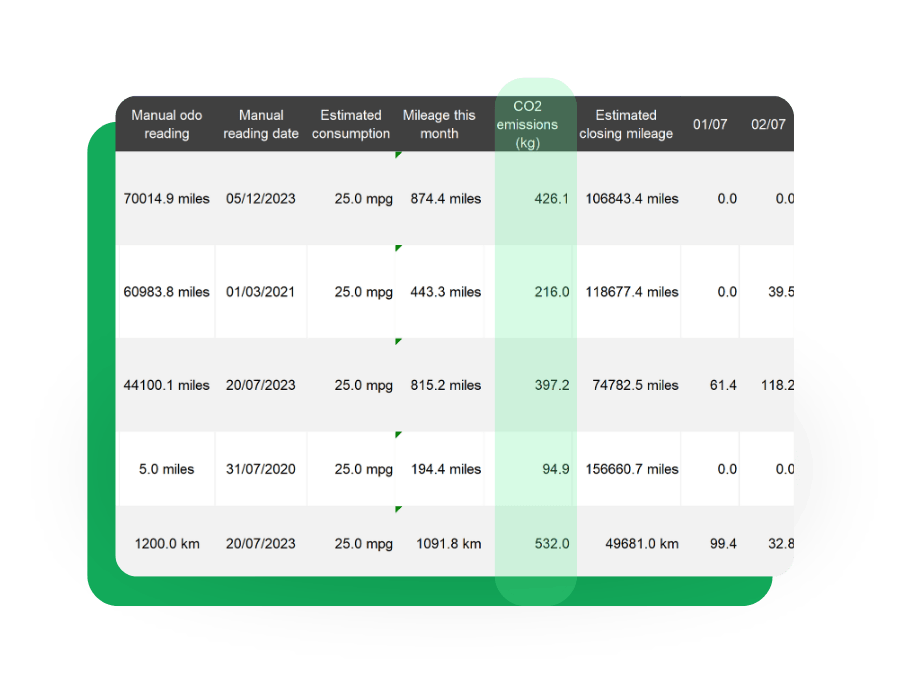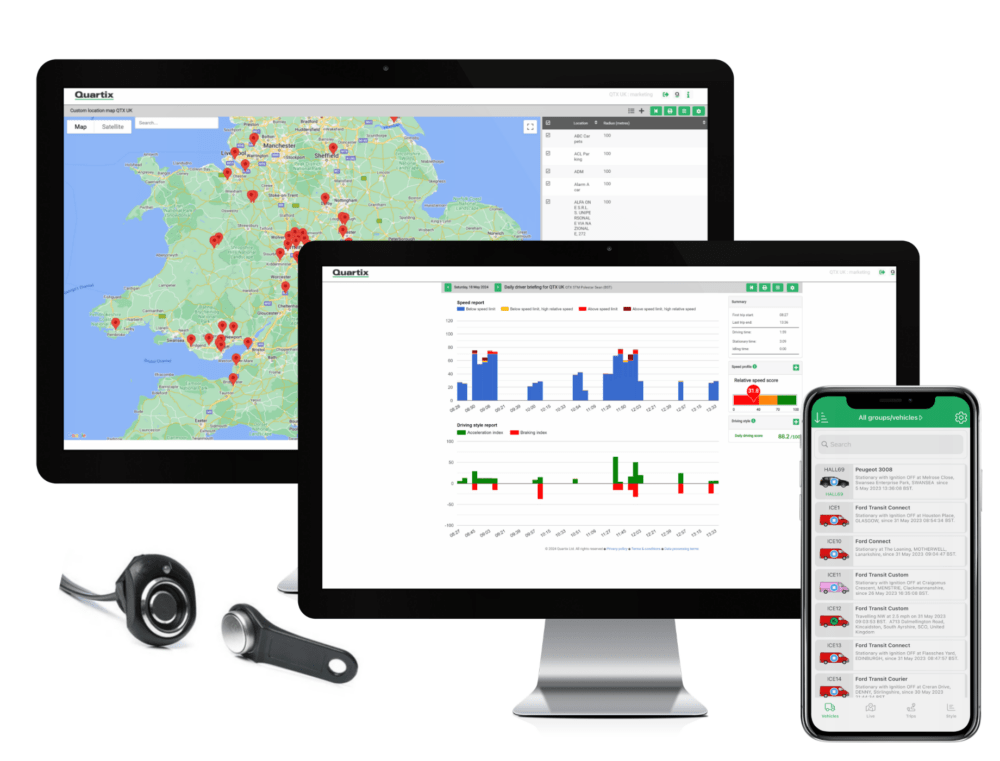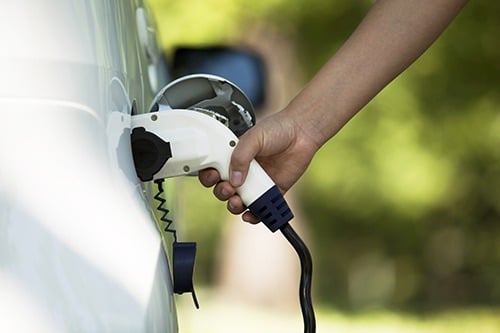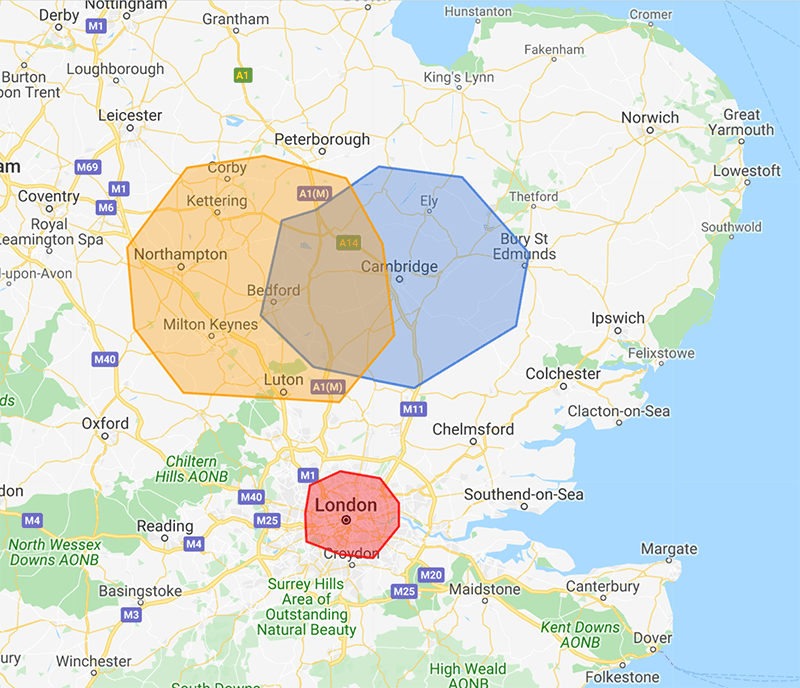Vehicle emissions are firmly in the spotlight. Governments, customers and partners alike are demanding greater environmental responsibility from businesses. Measuring your fleet’s carbon footprint is a chance to strengthen your company’s reputation and create savings.
If you manage a fleet of vehicles, this guide will help you understand:
- Why measuring emissions matters
- How to calculate them easily and accurately
- Practical strategies to reduce them
- Plus, get up-to-date resources and further reading
Road Transport: The UK’s Biggest Climate Challenge
Did you know that transport is the largest source of greenhouse gas emissions in the UK? In 2023, the domestic transport sector accounted for 29% of the UK’s total emissions, with nearly 89% of that coming from road vehicles (cars, vans, HGVs and buses).
Reducing your fleet’s carbon footprint isn’t a trivial detail—it’s essential for achieving the UK’s legally binding Net Zero targets.
Is It Mandatory to Measure Fleet CO₂ Emissions in the UK?
At present, not every UK business is legally required to calculate or report fleet emissions. However, the direction of travel is clear:
- The UK’s Climate Change Act 2008 sets legally binding carbon budgets that pressure all sectors to cut emissions.
- Large companies are increasingly required to report Scope 1 and 3 emissions under sustainability frameworks such as the Streamlined Energy and Carbon Reporting (SECR) rules.
- Public sector contracts and major corporate supply chains increasingly demand carbon footprint data in tenders.
Bottom line: Getting ahead of the curve is key. Measuring emissions isn’t just an “optional extra” any more – it’s a competitive advantage.
How to Calculate Your Fleet’s CO₂ Emissions
It’s simpler than you might think. The key input you need is fuel consumption.
Formula for Diesel Vehicles
CO₂ emissions (kg) = Litres of diesel × 2.68
(Official UK/EU conversion factor ≈ 2.68 kg CO₂ per litre of diesel)
Formula for Petrol Vehicles
CO₂ emissions (kg) = Litres of petrol × 2.31
(Official conversion factor ≈ 2.31 kg CO₂ per litre of petrol)
If you use the Quartix fleet tracking system, you can find your fleet emissions calculations in your Monthly Mileage report.

Why Measure Actual Consumption?
One common mistake fleet managers make is relying on catalogue values or generic averages. Real-world fuel consumption depends on:
- Vehicle model and age
- Load carried
- Traffic conditions and weather
- Driving style
Inaccurate estimates can hide inefficiencies and lead to unnecessary costs.
Getting Accurate Data from Your Fleet
This is where fleet management with GPS tracking comes in.
A system like Quartix can help you:
- Record actual fuel use and routes taken
- Generate automated emissions reports for tenders, clients or internal audits
- Identify inefficient driving behaviours such as excessive idling, speeding or harsh braking
This way, you can not only calculate emissions accurately but also reduce them proactively.
Effective Strategies to Cut Fleet CO₂ Emissions
Reducing CO₂ emissions isn’t just good for the environment – it’s also a direct route to lower operating costs, better resource use and a stronger, more responsible corporate image.
Here are some proven strategies:
Encourage Efficient Driving
Driver behaviour has a major impact on fuel use and emissions. Promote smooth, responsible driving by:
- Avoiding harsh acceleration and braking
- Maintaining steady speeds
- Reducing unnecessary idling
Training and motivating drivers is essential for lasting change.
Plan Preventive Maintenance
A well-maintained vehicle burns less fuel and emits less CO₂. Essential practices include:
- Regular engine and system checks
- Keeping tyres at the correct pressure
- Using quality oils and lubricants
- Following recommended service intervals
Preventive maintenance doesn’t just reduce emissions – it extends vehicle life.
Set Up Real-Time Alerts
Fleet management alerts let you quickly identify and address inefficient behaviours like:
- Excessive speeding
- Prolonged idling
- Unusual vehicle use
Automatic alerts enable fleet managers to make informed, proactive decisions to cut environmental impact.
Next Steps?
Reducing your fleet’s CO₂ emissions is an ongoing process that requires precise measurement, constant monitoring and planned action.
By adopting advanced fleet management tools and sustainable practices, your business will be better prepared to meet current and future environmental regulations. Boost operational efficiency, reduce costs and strengthen your corporate reputation.
Want to see how Quartix can help? Request a free demo today.






